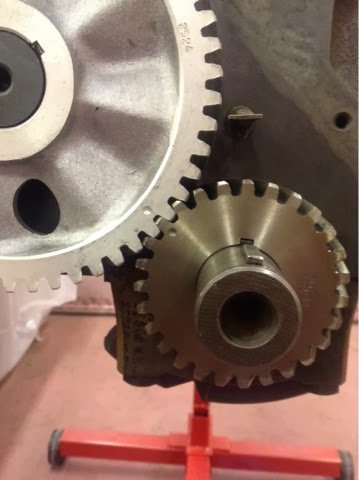So, if you are reading this you know I was born in 1964 like the old truck. But, you may not know I was born in Germany. My dad was stationed there with the Air Force. So, here's a story relayed by my dad. My mom, dad, sister and me were coming back from Germany after the overseas tour. We were in the airport and dad was holding his two most precious soveneirs from Germany. One was a Browning Model SA-22 Takedown Rifle in a leather carrying case and the other was a screaming toddler making everyone around him miserable (Yep, it was me). Dad says he finally got to the ticket counter and the guy at the counter asked, "What's in the case?" Dad said, "It's a gun." The guy behind the counter didn't even bat an eye because he was tired of the screaming toddler, he said, "Yeah right, come on through." So, dad carried his toddler (me) and a .22 rifle onto the airplane and stowed the little case in carry on luggage. Can you imagine this in our Post 9/11 world? Yeah, me either.
I tell this story because I was recently back home and told dad that I was looking to buy a Browning SA-22 like the one he brought back from Germany. He said,"Let me show you something." He pulled out a look alike Browning he had recently bought. It was in pretty rough shape, but he said I could have it. I brought it home and took it out to my range to see how it performed. It jammed on every shot. I knew this was a great gun, so I started to restore it to its former glory. First, I disassembled the whole thing. I used a razor blade to scrape away lead, powder residue and general gunk from inside. After a couple of hours of cleaning the mechanism looked and functioned great. But, I decided to restore the stock and forearm too.
I started by strpping all of the old finish from the gun. I used a toothbrush to get into all of the checkering.
You can see the scratches and dents in the old finish.
The old finish had a lot of deep scratches and bruises.
There was even a crack in the forearm that I was able to fix with fiberglass epoxy resin. I used a great technique, but didn't take pictures of it, sorry. But, here's what I did. I took a towel and soaked it in water. I squeezed out the excess water, laid it over the wood stock, then took a hot iron and ironed the wood through the towel. So, the iron turns the water in the towel to steam. Then the steam plumps the wood back up removing about 80 percent of the dents. This reduces the amount of sanding required and saves more of the wood. In other words, you don't have to sand as much of the stock away to get to the "good wood". It worked great, you should try it. It should be included in the list of life hacks!
I used Tru-Oil to finish the stock. I would add a very light coat, the let it dry. The next day I would go over it with fine steel wool, then add another light coat. I ended up with about six or seven coats. The end result turned out great.
Now, I have a great little rifle to remind me of my childhood and that cool story about the time my dad took a gun on a commercial airliner, what a hoot!






















































